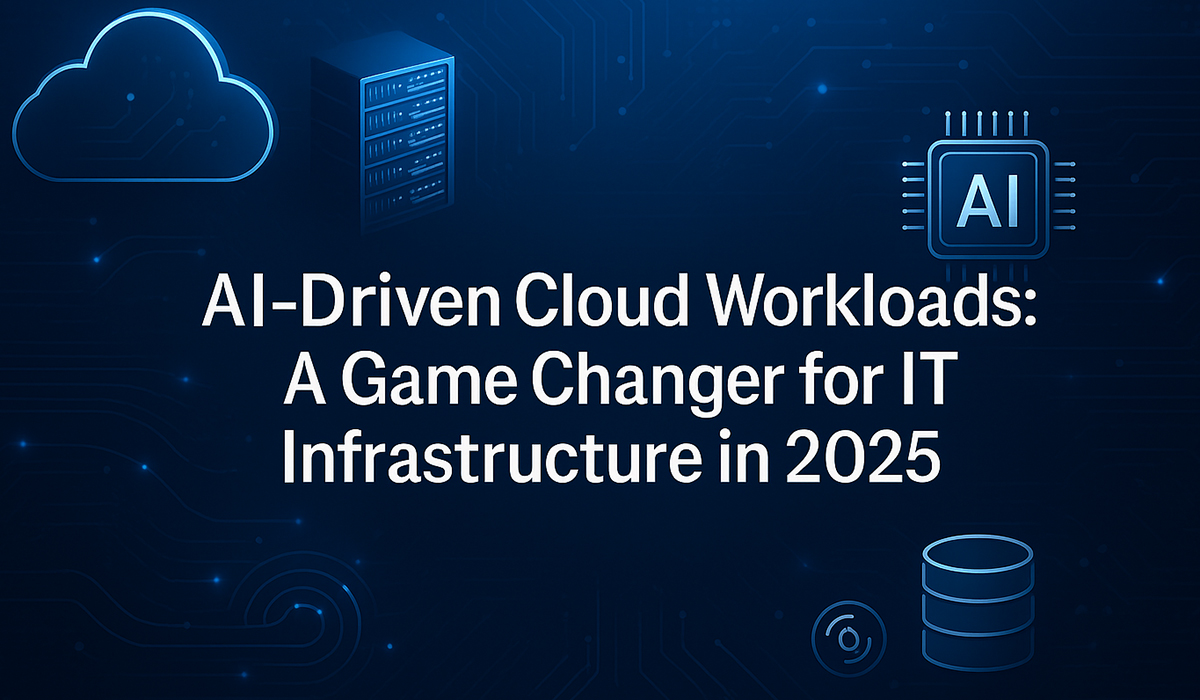 AI and Cloud in 2025: Redefining Enterprise IT
AI and Cloud in 2025: Redefining Enterprise IT
As the digital landscape continues to evolve, enterprises are increasingly turning to AI-optimized cloud workloads to enhance operational efficiency, reduce infrastructure costs, and accelerate innovation. The year 2025 marks a pivotal point where artificial intelligence (AI) and cloud computing converge to redefine enterprise IT strategies. Businesses are no longer just looking at the cloud as a scalable storage solution but as a high-performance computing environment tailored for AI workloads.
For companies to remain competitive in this AI-driven future, it’s essential to understand the best cloud platforms for AI workloads, the key factors that influence AI model performance in cloud environments, and how AI-enhanced cloud infrastructure can lead to smarter business operations. In this comprehensive guide, we explore everything enterprises must know about deploying, managing, and scaling AI workloads in the cloud in 2025.
Why AI-Optimized Cloud Workloads Matter More Than Ever
The rise of AI in cloud computing is no longer just a trend—it has become a fundamental necessity. AI models, particularly large language models (LLMs), computer vision algorithms, and real-time analytics tools, require immense processing power, scalable GPU access, and low-latency data pipelines. Conventional IT systems often prove inadequate in addressing the complex requirements of modern technologies. Cloud platforms, however, offer the scalability and performance essential for AI and machine
By leveraging AI-optimized infrastructure, enterprises gain the flexibility to train and deploy models at scale without massive upfront investment. Additionally, cloud-native AI solutions offer built-in features like auto-scaling, serverless deployment, real-time data processing, and distributed training capabilities. These features allow businesses to adapt quickly and efficiently in a constantly shifting market.
Key industries adopting AI-optimized cloud platforms include:
- Financial services (for fraud detection, algorithmic trading)
- Healthcare (for diagnostics, personalized medicine)
- Retail (for dynamic pricing, customer insights)
- Manufacturing (for predictive maintenance, robotic automation)
- Logistics (for supply chain optimization and forecasting)
Choosing the Right Cloud for AI Workloads
When evaluating the best cloud providers for AI in 2025, enterprises must consider more than just cost. Performance, scalability, ecosystem integration, and support for popular AI frameworks like TensorFlow, PyTorch, and Hugging Face Transformers all play a crucial role. The top contenders are:
- AWS for AI workloads: Delivers a robust suite of tools including Amazon SageMaker for complete ML model lifecycle management, Inferentia hardware tailored for high-performance deep learning inference, and Amazon Bedrock for streamlined foundation model development and deployment. scaling generative AI applications.
- Google Cloud for AI and ML: Known for Vertex AI, TPU clusters, and native integration with BigQuery and TensorFlow.
- Microsoft Azure AI: Popular for its integration with OpenAI models, enterprise-grade compliance, and scalable ML infrastructure.
Other notable mentions include IBM Cloud, Oracle Cloud Infrastructure (OCI), and niche providers like Run.ai and Lambda Labs.
AI performance in cloud computing hinges on having access to high-throughput GPU clusters, low-latency storage, and orchestration tools like Kubernetes and Kubeflow. Enterprises must also consider multi-cloud AI deployment strategies to ensure redundancy, avoid vendor lock-in, and achieve regulatory compliance.
Trends Shaping AI-Driven Cloud Infrastructure in 2025
Several emerging trends are shaping how enterprises approach AI workloads in the cloud. The adoption of these trends helps businesses remain agile, competitive, and future-ready.
- AI + Edge Computing
The fusion of AI and edge cloud computing is allowing enterprises to process data closer to its source, reducing latency and enabling real-time decision-making. Industries like autonomous transportation, IoT, and medical diagnostics particularly benefit from this, as they demand ultra-low latency where even milliseconds can significantly impact outcomes.
- Serverless AI Infrastructure
Serverless computing is revolutionizing how AI applications are deployed. Platforms like AWS Lambda, Azure Functions, and Google Cloud Functions now support AI models that can be triggered by specific events or run intermittently, leading to cost-efficient AI workload scaling.
- Generative AI in the Cloud
With the explosion of generative AI models such as GPT-4, Claude, and Gemini, enterprises are embedding generative AI in cloud workflows to automate customer service, generate content, and build intelligent assistants. Integrating these models requires careful tuning of cloud GPU capacity, security, and data privacy policies.
- AI Observability and Monitoring
In 2025, observability is not limited to application performance monitoring. Enterprises are focusing on AI model observability in the cloud, tracking drift, latency, accuracy degradation, and infrastructure bottlenecks. Tools like Prometheus, Grafana, and Datadog are being customized to include ML-centric metrics.
- Sustainability and Green AI
AI workloads are power-hungry. Enterprises are turning to green cloud AI infrastructure, optimizing model performance while reducing energy usage. Providers now offer carbon tracking tools and incentives to run jobs in greener regions or during off-peak hours.
Stay updated! Follow us on social media! Facebook, Twitter, LinkedIn
Check out our newest blog entry (ACTSupport Virtualization Transformed My IT)
Subscribe to get free blog content to your Inbox [email-subscribers-form id=”1″]




